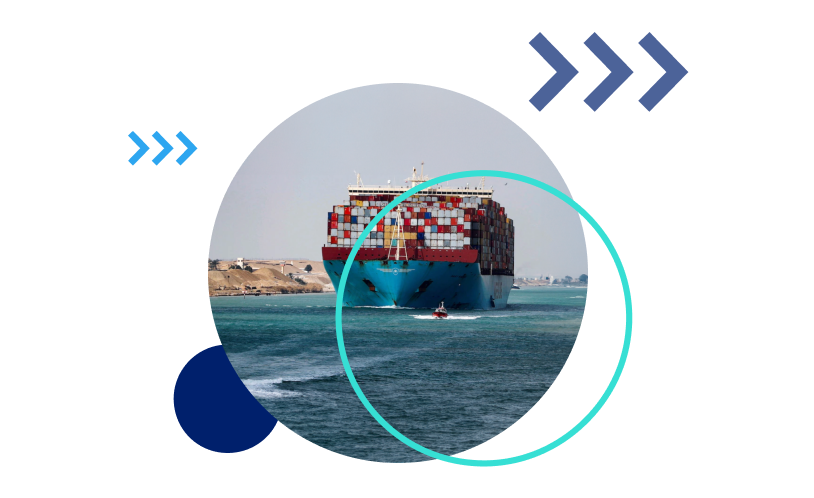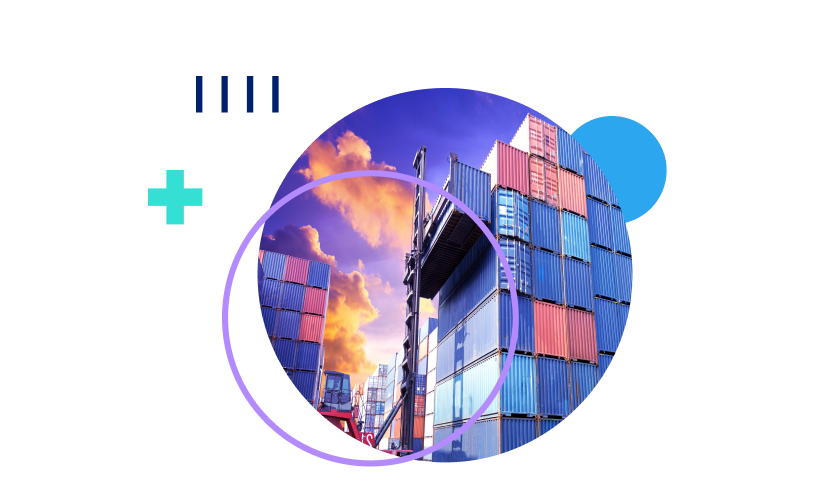Playing Dice with the High Seas
In 2021 and 2022, supply chains regularly made the headlines, as supplies of basic necessities like toilet paper were suddenly jeopardized. It took time for the situation to normalize, especially for complex products like semiconductors that require a lot of moving parts in the global supply chain. Just when it seemed that 2024 would be a very welcome year of “normal” supply chains, the Red Sea crisis proved that for global supply chains, there is no such thing. With this fresh in mind, how are small and medium-sized importers preparing for 2024? And the answer lies in how their 2023 went too. Let’s take a look at the Red Sea situation and then get back to their answers, as shared by over 200 small and midsize importers.
Want a quick video overview? Watch below:
The Red Sea Crisis: A Ripple Effect in Global Trade
The Red Sea, a critical artery in the body of global trade, has become the epicenter of geopolitical tension. The latest? A coalition of nations, including the US and UK, demanding the cessation of Houthi attacks in the region in order to keep traffic through the Suez Canal, a key global artery, flowing. Despite these efforts, to date the attacks continue, pushing most major carriers representing over 60% of global container capacity, to alter their routes. The implication for global freight beyond the now typical uncertainty is predictably elevated operational costs and soaring freight rates. For example, the Freightos Baltic Index indicates a 69% increase to North America’s East Coast and a staggering 226% to Northern Europe since the crisis began.
It may be off a lower-than-normal base price but for importers and exporters suffering from lower sales, it’s almost certainly troubling news.
Get access to real-time freight pricing and transit time changes with Freightos Terminal
Survey Insights: SMB Importers in 2023
A survey of more than 200 SMB importers using the Freightos.com Marketplace reveals that for supply chain professionals, coming off the incredibly stress-ridden ‘21 and ‘22, last year was finally a relatively good year. A significant majority – 70% – reported a return to normalcy in logistics operations, with 40% experiencing conditions that were even better than those they experienced pre-pandemic. This is a significant shift from late 2021, when 93% faced serious disruptions. The decrease in logistics costs led 35% of importers to lower their product prices, possibly contributing to the easing of inflation rates.
The regression in pricing wasn’t just due to lower demand. It converged with a trend of both airlines and ocean liners investing far more heavily in their fleets over the past fewyears. In other words, while demand was dropping, supply of capacity was increasing. This ensured that today’s partial blockage of the Suez Canal, while disruptive, is still far less impactful than its far more meme-worthy 2021 relative in which the Evergiven blocked the canal.
Navigating 2023’s Challenges and Looking Ahead
While 2023 saw a general decrease in demand, with 60% witnessing a downturn, most attributed this to high inflation and a shift in consumer preferences. In other words, it may have been a good year for the supply chain manager but for the business, it was likely far less cheerful.
Despite this, there’s a wave of optimism for 2024 sweeping across importers and exporters.
About 46% of importers expect demand to stabilize, and 41% even anticipate an improvement. This optimism is buoyed by the fact that 55% of importers have their inventories in check, anticipating a stronger freight demand in the coming year.
The Red Sea Crisis: Direct Impact on SMB Importers
Concerns still abound, especially – for now – the Red Sea crisis, with most importers (60%) worried about the impact of route diversions on logistics operations and costs. The second place concern is uneasiness around the long-term impact of new ESG requirements. Third is that dramatic overcapacity will lead to canceled sailings that interfere with tight supply chains schedules. This is actually surprising; while some importers are concerned about the Red Sea delays, which would reduce available capacity due to longer transit times and turnarounds, many are concerned about too much capacity. In other words, this is a far cry from 2021 and its dramatic capacity shortage.
Navigating the Storm: Strategies for SMB Importers in 2024
There is no golden ticket for solving these challenges. In fact, the hard reality is that looking back over the past decade, supply chains have been disrupted by shipping bankruptcies, wars, pandemics, geopolitics and tariffs. Most of these are nearly impossible to plan for.
Which means that given these turbulent times, importers must stay nimble and informed. They should monitor the evolving geopolitical situation and adjust their shipping strategies accordingly. Exploring alternative shipping routes and modalities, including air cargo, is crucial despite the higher costs. Budgeting for fluctuating rates and remaining abreast of carrier negotiations are essential strategies for navigating 2024.
As we sail into 2024, the ability of SMB importers to adapt and respond to these unprecedented challenges will be key. The Red Sea crisis is life-threatning to sailors and disruptive to global supply chains, but it also offers a valuable lesson in resilience and agility. By staying informed, flexible, and proactive, SMB importers can navigate these choppy waters and emerge stronger, ready to face the ever-changing dynamics of global trade.



